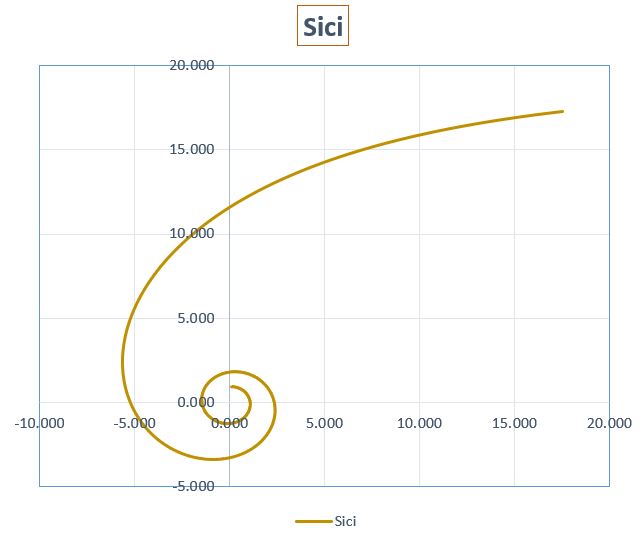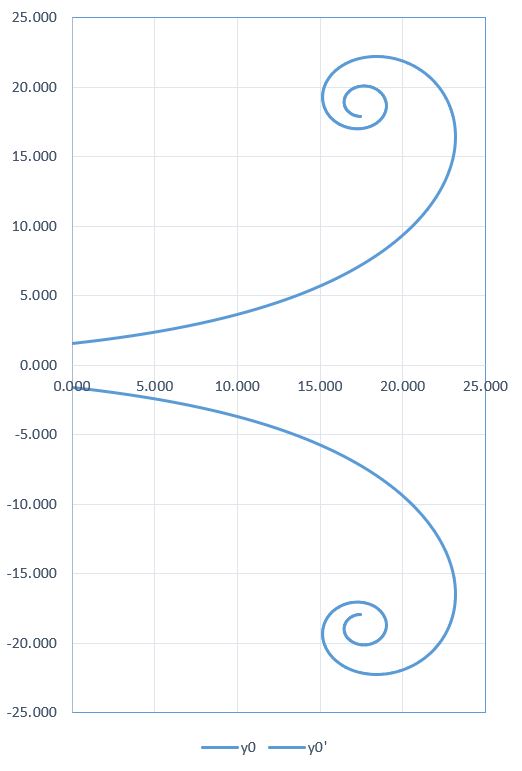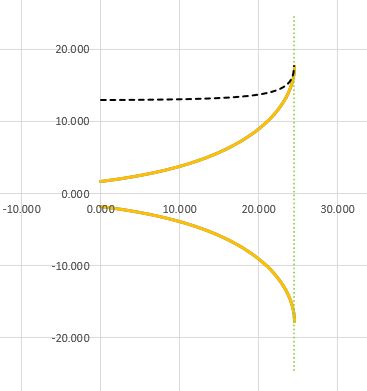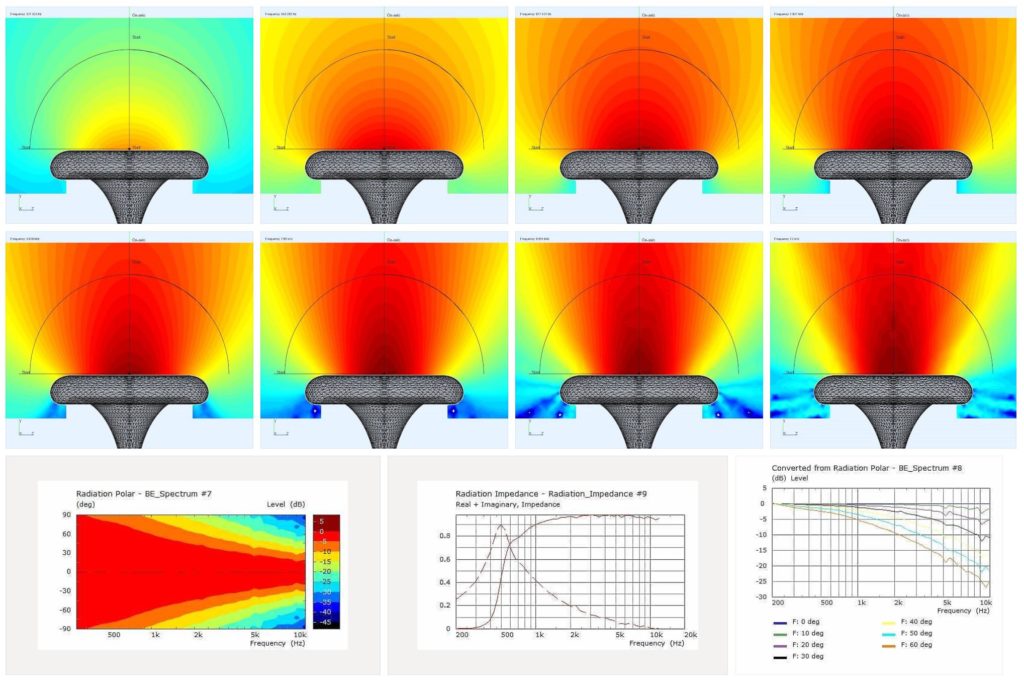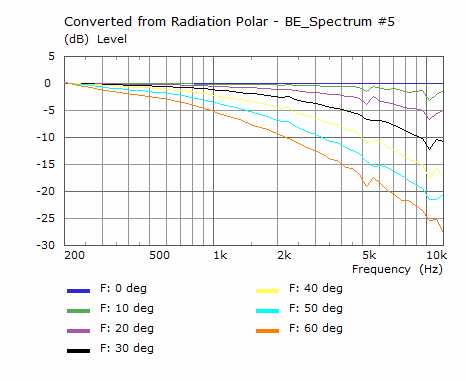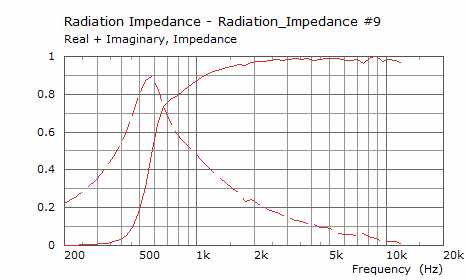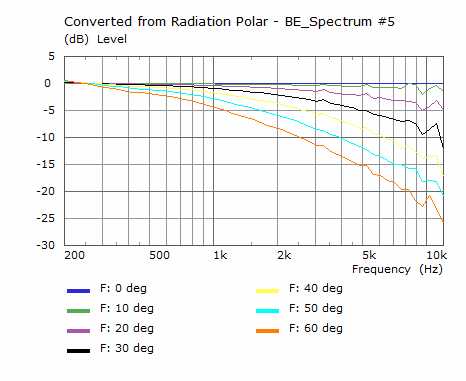The last post in this series deals with the Sici spiral (Link1). It is similar to the Nielson spiral. I already mentioned that this spiral is my personal favourite of the three spiral functions presented on my page. On the one hand this is because the curve reminds me of JMLC horns and on the other hand because of the simple relationship of the tangent with respect to the basic rotation angle. In addition, we will see that the tangent vector, when the parameters are selected appropriately, results in a nearly constant length over large areas of the horn curve and only expands towards the horn mouth.
The cartesian parametrization look simple on the first view
\tag{1a}x =-a \cdot Ci({\phi})
\tag{1b}y = a \cdot \left( \frac{\pi}{2}-Si({\phi})\right)
but Ci(\phi) and Si(\phi) are the cosine and sine integrals (Link2). These integrals need to be solved but again as for the Cornu spiral these integrals can be developed as a series expansion. With proper offsets defined the Sici spiral becomes usable as horn profile function.
\tag{2}x_0 =-a \cdot Ci({\phi_s})
\tag{3a}y_0 = y(\phi_s) = a \cdot \left( \frac{\pi}{2}-Si({\phi_s})\right)
\tag{3b}y_0 = y(\phi_0) = a \cdot \frac{\pi}{2}
The crazy thing about the Sici spiral is that the cartesian tangential angle is identical to the rotational angle. Once we have chosen an arbitrary angle \phi we immediately know the tangential angle \psi of the function.
\tag{4}\psi = \phi
The intersection of this tangent with the horn axis gives a construction vector of the wave fronts inside the horn. It would be interesting to compare this vector with the spherical wave horn. As for the other spirals an initial spread sheet was created to assess how the resulting profile would look like. With a start rotational angle greater than zero, a terminating angle of 720° and a distinct base length I was very surprised what came out and I can only say: what a beauty!
This definitely looks like a usable horn profile with a perfect intrinsic roll-back. By adding the counterpart and applying offsets I let speak the following picture for itself:
I f we deal with horns it is always desirable to have something like a frequency cut-off number or ar least down to what region a horn could be used. Different calculation approaches yield different results. The main objectives I used are the length of the horn or the mouth radius. Using the same cut-off, i.e. 350 Hz, result in totally different horn profiles. So please bear n mind that if we speak about cut-off then this is only a mathematical parameter. Anyway, the following pictures are the result of a quarter wave length optimization of the start rotational angle and base constant length to give the desired horn length (cut-off: 350 Hz):
The corresponding 2D horn profile is shown in the following picture. I have added the tangential vector length as dashed black line. The first time I recognized the linear behaviour from throat to near horn mouth I was very surprised and this immediately reminded me on the spherical wave horn with it’s constant wave front construction vector. But for the Sici spiral this is an intrinsic property by using the described constraints:
What is also apparent that the length of the tangential vector increases considerably at horn mouth. For those who would like to view the profile with an CAD software I have added and STL file:
With all these very nice looking shapes, the question arises in the end how well they are suitable for a horn. BEM simulations are a very good help for this question. In the following I would like to present three examples. Two round Sici horns and an elliptically transformed one that has also undergone a slight stereographic projection.
I would like to thank DonVK again for creating the models / project files for AKABAK and Joerg Panzer for his awesome software package and the possibility to share the results.
The two round horns differ in that on the one hand the length has been optimized as a quarter of the wavelength of the desired cut-off frequency and in the other the mouth opening has been optimized in this regard. I have changed the presentation to something that looks similar to a datasheet for each different horn on one page with observation fields, impedance and polars. As first, the results the quarter wavelength optimized shape:
When I saw the results for the first time, I was very surprised. In particular, the impedance curve for me looks like a ideal and perfect textbook example with a very even and smooth impedance drop to low frequencies. The observation fields also have no serious artifacts, no matter what frequency you look at and that goes beyond 10k. The polars have a very even drop to high frequencies and the beaming is within the tolerable range. Simply unbelievable, because the Sici spiral is intuitively out of the question for a horn profile – until now!
Similar horn types are often criticized because they beam strongly. The following picture shows, however, that in my opinion the beaming is acceptable for a home loudspeaker.
I am relatively certain that a Sici Horn would have a very neutral and natural sound and, in my opinion, e.g. would be preferable to a Tractrix Horn. The next round horn was mouth optimized and is shorter:
The impedance drops a little steeper here because this horn is shorter, but also very even and smooth.
In return, the short horn has fewer beaming effects, as was to be expected:
Finally, the elliptical Sici horn. The goal was to improve horizontal radiation. The shape is similar to the spherical wave horns, which were subjected to the same algorithm.
The BEM simulation reveals a fantastic performance for the elliptical Sici horn.
The moderate elliptical stretching provide slightly better horizontal coverage without giving up the vertical polar. A more drastic stretching could further improve horizontal coverage.
In the series of three spiral functions presented, the Sici spiral is my clear favourite. It has a built-in roll-back, so to speak, and shows excellent impedance behaviour with moderate beaming and excellent observation fields in the BEM simulation. It’s time for the Sici spiral as horn profile function!
I hope you enjoyed this series of articles on spiral functions for horns. It will go on with other horn profiles and therefore just stay tuned.

